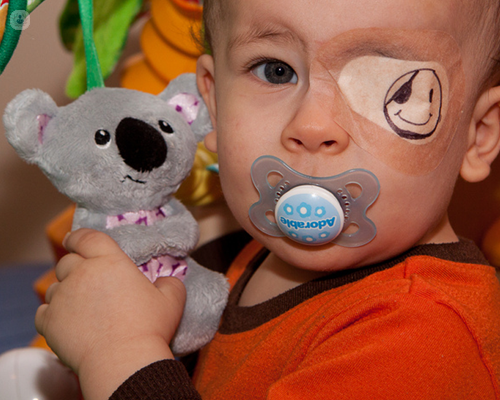Strabismus: how and when to treat
Written by:Strabismus is loss of alignment of the visual axes which may comprise one or more visual directions. This lack of alignment in the eyes causes the inability to focus the same point simultaneously. When it comes to pediatric strabismus a phenomenon of adaptation by which the brain selects the best picture quality on and off the vision of the other eye to avoid double vision, which appears as a result of not being able to see the same image with both eyes given but this reaction can lead to what is commonly known as lazy eye or amblyopia.

Most cases of pediatric strabismus have an unknown origin but may be related to neurological disorders such as prematurity, cerebral palsy or Down syndrome, among others. Strabismus can also be related to ocular disorders that compromise vision, as in the case of congenital cataracts, as well as refractive disorders such as farsightedness or major anisometropia. Occasionally strabismus it can also be caused by heredity.
However, when it comes strabismus in adults are secondary to other pathologies, whether neurological, as in the case of stroke, head injury or brain tumors; metabolic diseases, such as diabetes or hyperthyroidism; orbitarias such as fractures, previous surgery or orbital tumors; eye or, when it comes to diseases with significant unilateral or bilateral visual impairment.
Treatment of strabismus
The main treatment of strabismus is to minimize or prevent visual impairment of amblyopia binocular vision and rehabilitate penalty with different techniques and optical treatment.
Strabismus surgery
Strabismus surgery aims to change the insertion of the oculomotor muscles, its length, its path or its power, adapting them to the characteristics of each case.
The ophthalmologist must resort to surgery when the engine engagement and visual can not be controlled by optical means, assessing in each case what can be achieved with surgery: aesthetics and visual healing, aesthetics only correction or functional improvements, such as control of a torticollis or a nystagmus. Motor impairment can also be treated with botulinum toxin in very specific occasions.
In cases where there is a high probability of diplopia double vision, strabismus nonsurgically be treated.



